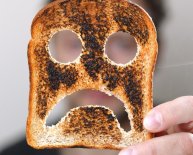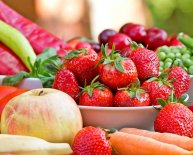
Facts About eating healthy foods
- Balanced and healthy diet helps combat malnutrition in most its forms, also noncommunicable diseases (NCDs), including diabetes, heart problems, swing and disease.
- Bad diet and not enough physical exercise are leading global risks to health.
- Healthy dietary practices start early in life – breastfeeding fosters healthy growth and improves cognitive development, and may have longer-term health benefits, like reducing the risk of becoming overweight or obese and developing NCDs later in life.
- Power intake (calories) should-be in balance with energy spending. Evidence indicates that total fat should not exceed 30% of total energy intake to avoid unhealthy weight gain (1, 2, 3), with a shift in fat consumption away from saturated fats to unsaturated fats (3), and towards the elimination of industrial trans fats (4).
- Limiting consumption of no-cost sugars to significantly less than 10percent of total power intake (2, 5) is a component of a healthy eating plan. A further decrease to less than 5percent of complete energy consumption is recommended for additional healthy benefits (5).
- Maintaining sodium intake to under 5 g each day helps prevent hypertension and decreases the risk of cardiovascular illnesses and stroke when you look at the person population (6).
- Just who associate States have consented to lessen the international populace’s intake of salt by 30per cent and halt the increase in diabetes and obesity in grownups and teenagers as well as in childhood overweight by 2025 (7, 8, 9).
Overview
Eating a healtier diet through the lifecourse helps prevent malnutrition throughout its forms as well as a selection of noncommunicable conditions and conditions. However the enhanced production of prepared food, quick urbanization and switching lifestyles have actually led to a shift in diet habits. People are today eating up more meals saturated in power, fats, free sugars or salt/sodium, and lots of never eat adequate good fresh fruit, vegetables and nutritional fibre such whole grains.
The actual makeup of a diversified, balanced and proper diet will vary depending on specific needs (example. age, gender, way of life, amount of physical working out), social framework, locally available foods and nutritional customs. But basics of exactly what constitute balanced and healthy diet continue to be similar.
For adults
A heathier eating plan contains:
- Fruits, veggies, legumes (example. dried beans, beans), nuts and whole grains (e.g. unprocessed maize, millet, oats, grain, brown rice).
- At least 400 g (5 portions) of fruits and vegetables daily (2). Potatoes, nice potatoes, cassava alongside starchy origins aren't classified as fresh fruits or vegetables.
- Not as much as 10% of complete power consumption from free sugars (2, 5) that is comparable to 50 g (or about 12 degree teaspoons) for one of healthy bodyweight consuming approximately 2000 calories per day, but preferably less than 5per cent of total power consumption for extra health benefits (5). Most free sugars tend to be included with meals or beverages by the manufacturer, prepare or customer, and that can additionally be present sugars naturally present in honey, syrups, fruit drinks and juice focuses.
- Less than 30per cent of complete power consumption from fats (1, 2, 3). Unsaturated fats (e.g. found in seafood, avocado, peanuts, sunflower, canola and olive oils) tend to be preferable to saturated fats (e.g. present fatty meat, butter, hand and coconut oil, ointment, cheese, ghee and lard) (3). Industrial trans fats (present in prepared meals, fast-food, snack food, fried meals, frozen pizza, pies, snacks, margarines and spreads) are not part of a healthy diet plan.
- Under 5 g of salt (equal to more or less 1 tsp) a day (6) and use iodized sodium.
For infants and children
In the 1st 2 years of a child’s life, optimal nourishment fosters healthier growth and gets better intellectual development. Moreover it decreases the risk of becoming overweight or obese and developing NCDs later on in life.
Suggestions about a healthy eating plan for infants and children is comparable to that for grownups, nevertheless the following elements are also crucial.
- Babies should really be breastfed exclusively throughout the first a few months of life.
- Infants should really be breastfed constantly until two years old and beyond.
- From half a year old, breast milk should always be complemented with multiple adequate, safe and nutrient thick complementary meals. Salt and sugars shouldn't be added to complementary foods.
Fruits & vegetables
Eating at least 400 g, or 5 portions, of vegetables and fruits per day decreases the risk of NCDs (2), helping guarantee an adequate everyday consumption of dietary fiber.
So that you can improve good fresh fruit and veggie usage you'll:
- constantly consist of vegetables in your meals
- eat fruits and natural vegetables as treats
- eat fruits and vegetables in season
- consume a variety of choices of fruits and vegetables.
Fats
Decreasing the level of total fat intake to less than 30percent of complete power consumption helps in avoiding bad weight gain when you look at the person populace (1, 2, 3).
Additionally, the possibility of building NCDs is decreased by decreasing saturated fats to significantly less than 10percent of total energy consumption, and trans fats to not as much as 1% of total power intake, and changing both with unsaturated fats (2, 3).
Fat intake are reduced by:
- altering the method that you cook – remove the fatty element of beef; use veggie oil (perhaps not animal oil); and boil, vapor or bake rather than fry;
- preventing processed food items containing trans fats; and
- limiting the consumption of foods containing high amounts of saturated fats (example. mozzarella cheese, ice-cream, fatty animal meat).
Salt, sodium and potassium
A lot of people take in excessively sodium through sodium (equivalent to an average of 9–12 g of salt per day) rather than enough potassium. Tall sodium consumption and insufficient potassium intake (significantly less than 3.5 g) play a role in raised blood pressure, which increases the chance of heart disease and stroke (6, 10).
1.7 million deaths might be avoided every year if people’s sodium usage were reduced into suggested level of not as much as 5 g each day (11).
People are usually unacquainted with the total amount of sodium they consume. In several nations, many salt arises from processed foods (example. prepared dishes; prepared meat like bacon, ham and salami; cheese and salty treats) or from meals used often in large amounts (e.g. loaves of bread). Salt can be added to food during cooking (example. bouillon, stock cubes, soy sauce and seafood sauce) or at the table (example. dining table salt).

















